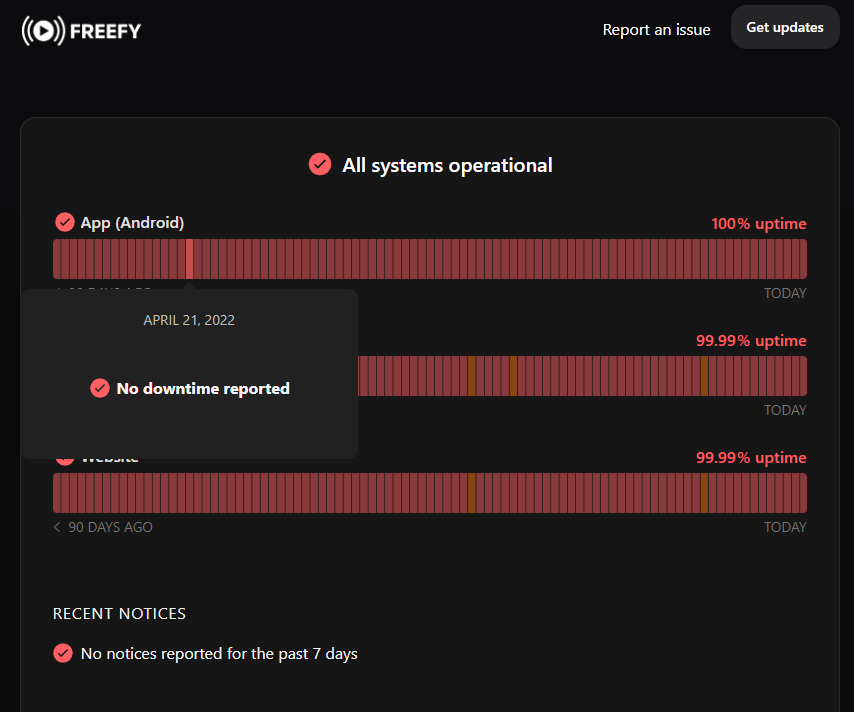Top DevOps Automation Tools to Improve Your Processes

DevOps brings results. That’s why it’s quickly grown in popularity and been adopted throughout the industry. But how does DevOps bring results? Well, by tossing out the processes of old and replacing them with a methodology to suit modern technology and modern needs.
Here’s a challenge: try finding a DevOps practice or principle that cannot be supported by automation. Pretty hard if not impossible, right? DevOps and automation are intimately linked together. Automation technology emerged around the same time as DevOps and they’ve grown up together. If you want to learn more about DevOps, automation, and how the two combine to make a killer software product, then keep reading.
You’ll find a suite of automation tool recommendations, ranging from complex software testing tools like Katalon to simple, but effective tools like status pages from Instatus.
What is DevOps?
DevOps is a software development culture and methodology that emphasizes collaboration between software development and IT operations. DevOps is focused on building a better software product through continuous integration and deployment.
The DevOps philosophy started from the frustrations of software developer, Patrick Debois. Debois hated the separation between development and operations teams. The strict siloing and lack of collaboration were destroying the industry and limiting progress. In 2008, Debois started discussing solutions with others in the industry and the DevOps movement was born. Within a few years, DevOps started to gain major traction in the industry. Now, in 2025, DevOps is the leading software development methodology.
Modern software products are a completely different type of product than the software of the past. Software is the backbone of organizations, providing a way for customers to interact with your business, applications, and services. Software is integrated with the internet and today, the two are expected to function seamlessly.
What does DevOps look like in practice?
DevOps brings results, we’ve already covered that. But you may want to know how DevOps will change your organization when implemented? Well, the answer is a complete 180.
DevOps requirements mean forcing your teams to de-silo. Siloing refers to the separation between IT operations teams and software development teams. This was the longtime organizational standard before DevOps. Siloing reduces collaboration and communication.
Data silos are also reworked to make any organizational data that can be effectively used across the WHOLE organizations. Historically, departments kept their data siloed, meaning it wasn’t shared across departments. But fragmented data hurts the entire organization. You can’t understand large-scale organizational trends and how different teams affect each other, with data siloed. Teams spend longer searching for and requesting the data they need.
By removing the barriers between the IT operations teams and software development teams, you reduce organization blind spots. Data and processes will unify, collectively increasing visibility. From a management perspective, a higher degree of visibility allows for an easy understanding of bottlenecks and how the individual processes play into the larger processes. Collaboration during the entire application lifecycle leads to an organizational increase in efficiency and flexibility.
What is Automation?
Automation is a form of technology that can perform tasks independently and without (or with reduced) human input. Automation is a key principle in DevOps. A common misconception among those outside the tech industry is that automation is complicated and highly technical. Automation is also NOT artificial intelligence, although the two technologies are commonly paired together. In reality, automation is just about allowing computers, software, and scripts to do the work of people. Automation tools range from highly complex, to simple but very effective.
Automation & DevOps
With DevOps and automation, you can transform every aspect of your development process. Automation helps the development of software products by reducing repetitive and time-consuming work for developers and operations. Your team can focus on tasks that require human involvement or ingenuity, leaving the brainless jobs to the automation tools.
Automation also removes the chance of mistakes, by preventing human error. Human error is the number one reason why software deployments fail, so removing the primary source of error helps the development process overall.
How DevOps and Automation Fit Together
Automation is a tool to meet DevOps goals. Let’s consider these 5 goals and how automation can improve your organization's development pipeline:
1. Standardize
DevOps encourages teams to standardize any process, protocol, or workflow. Dev and Ops teams should meet to agree on development standards. When you standardize, your teams will produce higher quality work with more predictability. There will be less back-and-forth and development will progress more linearly. Consider standardizing coding style, code review, testing, and deployment. Standardize your tools, requiring all developers and operations team members to use the same library of tools without deviation.
Automation tools can provide guidance to developers, recognize code outside of the standard, and limit human error that negatively affects the set standards.
2. Speed
DevOps culture also advocates for rapid development. An application that gets stuck in the middle of development, or even just slowed down, is much more likely to miss the mark on its deliverables. But developers and operations don’t work around the clock. And even when they are working, teams are working through a constantly evolving to-do list.
Let automation and DevOps scripts handle time-sensitive tasks for you. The more tasks you automate, the quicker the development process will go. Instead of waiting for an available developer to trigger a task or run scripts, an automated process will automatically proceed in triggering a task, as soon as it’s available to do so. If your team is tied up on this week’s latest development disaster, let automation handle the tasks that they don’t need to be there for. This helps keep your team on track even when the unexpected happens.
3. Scalable
DevOps understands that easily scalable systems are inherently more stable and flexible than their non-scalable counterparts. The problem is, that it’s hard to scale manual processes. If all your processes are manual, then as your software application scales up, so do your team's needs. You’ll be unable to attend to manual processes without hiring more Dev and Ops members.
When you decide to automate manual processes, you reduce scalability issues immediately. Choose to automate using cloud-based environments, and your software can be scaled up as needed. For example, Microsoft Azure can Autoscale applications to meet your unique needs. Scaling using these kinds of automated systems is responsive and highly flexible.
4. Flexibility
Honestly, the key to scalable processes and speedy development is your team's flexibility. Every day brings something new and your systems and teams need to be able to adapt. DevOps will challenge your team members to find new and better ways of tackling issues. Automation is extremely flexible and can handle any changes with a simple configuration change.
DevOps Automation Tools
These days, there are hundreds of DevOps automation tools to choose from. It can be overwhelming when trying to find the best fit for your team and software product. That’s why we’ve decided to organize automation tools by process. You can easily find what process your team would benefit from automating the most, and start there.
Need help automating your manual software testing methods? Check out the testing section. Is your current monitoring setup not working efficiently? See the monitoring section and have a look at the best recommendations.
1. Monitoring
Monitoring services are an integral part of any organization’s toolkit. Your system administrators need to monitor and manage many services at once. With monitoring automation tools, your Ops team will have access to elaborate dashboards to help them keep a close eye on how all your services and systems are performing.
Instatus
Instatus offers beautiful status pages to keep you and your users updated on any service or application disruptions. System administrators can easily provide updates to users on current issues, expected timelines for restoration, and much more. With Instatus, users have a single source to check for issues, which helps reduce the number of tickets and emails your team has to manage.
Instatus is 10x faster than leading competitors, for a fraction of the cost. You can start with a free Instatus page and upgrade later as needed. All users can subscribe to be notified of outages for your services, with no limits. Check out the gallery of status pages, to see your options.
SolarWinds
SolarWinds is an IT management and monitoring solution that you have to try. SolarWinds makes application and server monitoring simple. Use any of the 1,200 out-of-the-box templates or browse through the community templates. SolarWinds can monitor any cloud provider, including Azure and AWS.
Manage your network's performance and traffic easily using SolarWind’s Network Performance Monitor and Netflow Traffic Analyzer. Your system administrators will love the suite of Database Management tools, including SQL Sentry and Database Performance Monitor. SolarWinds offers several free tools, but you’ll need to pay handsomely to get the best value.
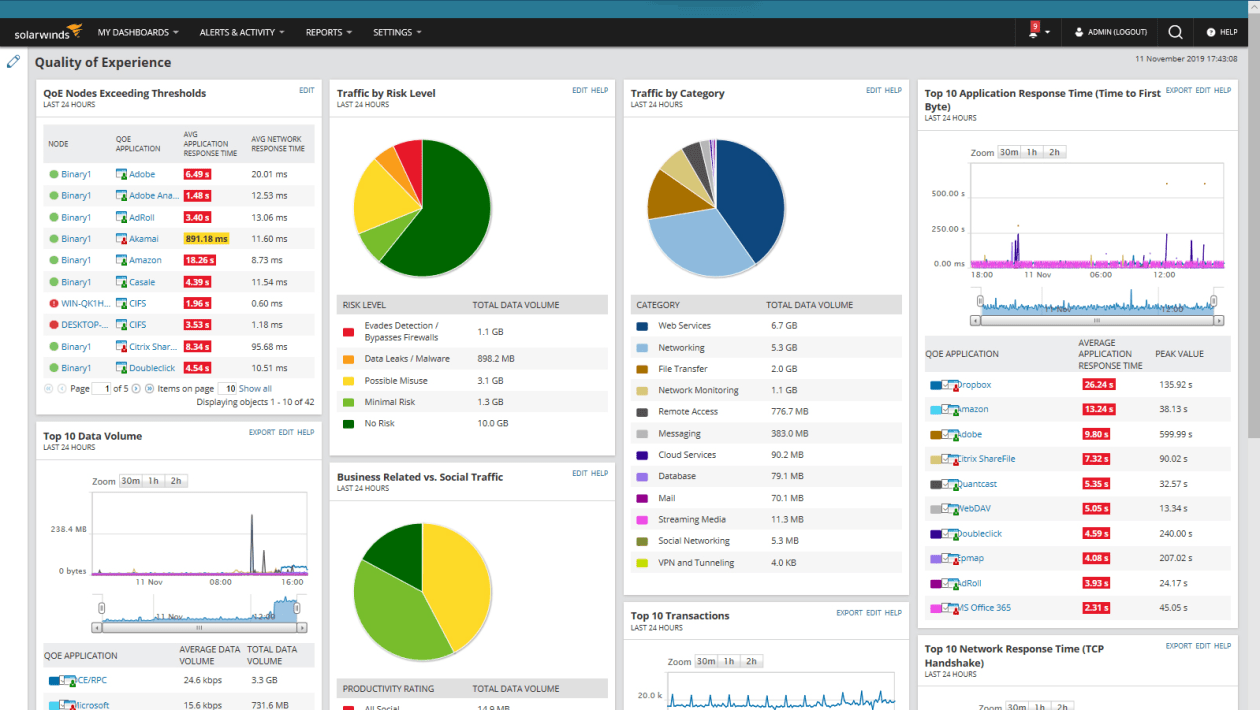
2. Continuous Integration/Continuous Delivery (CI/CD)
CI/CD is the single most important part of the DevOps equation. Continuous integration/continuous delivery should be automated whether your organization is large or small. When you automate CI/CD, automation will handle the build process, code commits, feature flags, and much more.
Feature Flag Tools
Keep your in-development code wrapped with feature flags to increase deployment frequency. Feature flags are left off until development is complete and your team is ready to turn them on.
Optimizely Rollouts
Optimizely Rollouts offers their feature flagging tools completely free. Optimizely brags about being the ‘most robust feature flagging platform’ and there’s a reason why. They have over 9,000 business customers including major brands like IBM and MailChimp. Optimizely doesn’t gatekeep its features behind expensive price plans. Instead, you can get started with the feature flag toggles today, allowing your team the freedom to choose how features get rolled out. With Optimizely you won’t be afraid to try new things, using their experiment features your team can run A/B tests to understand the impact and value of new features.
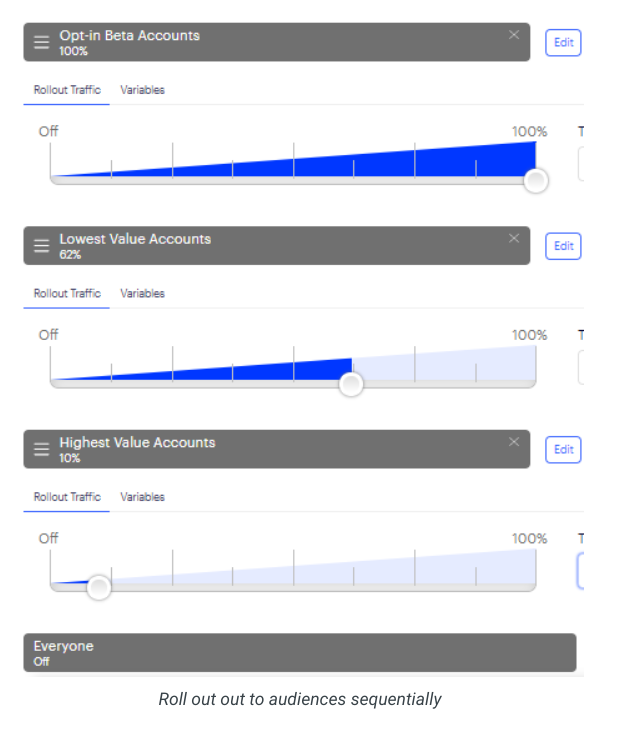
CloudBees
CloudBeeds offers an enterprise feature flag solution that can be integrated using CloudBees Software Delivery Platform. Take advantage of their developer-first focus, allowing developers to edit flags without using a dashboard. Features can be set for automated rollout based on a percentage or other options. Choose which members of your userbase receive certain features first, for highly targeted user testing.
CI/CD Platform
Choose a CI/CD platform that can handle the automation of all the development and deployment tasks you could ever need. A CI/CD Platform will dramatically streamline your full development process, helping Dev and Ops work more closely together than ever before. There are quite a few options good in this category, but we’ll just cover a few here.
Jenkins
Jenkins is very well-known and popular as a CI/CD server Jenkins is an open-source and community-driven option, making it a great option for smaller organizations. Configuration is easy and you can use any of the hundreds of plugins developed by the Jenkins community. With Jenkins you can automate building, testing, deploying, and much more. Use Jenkins with Docker, JRE, or native system packages.
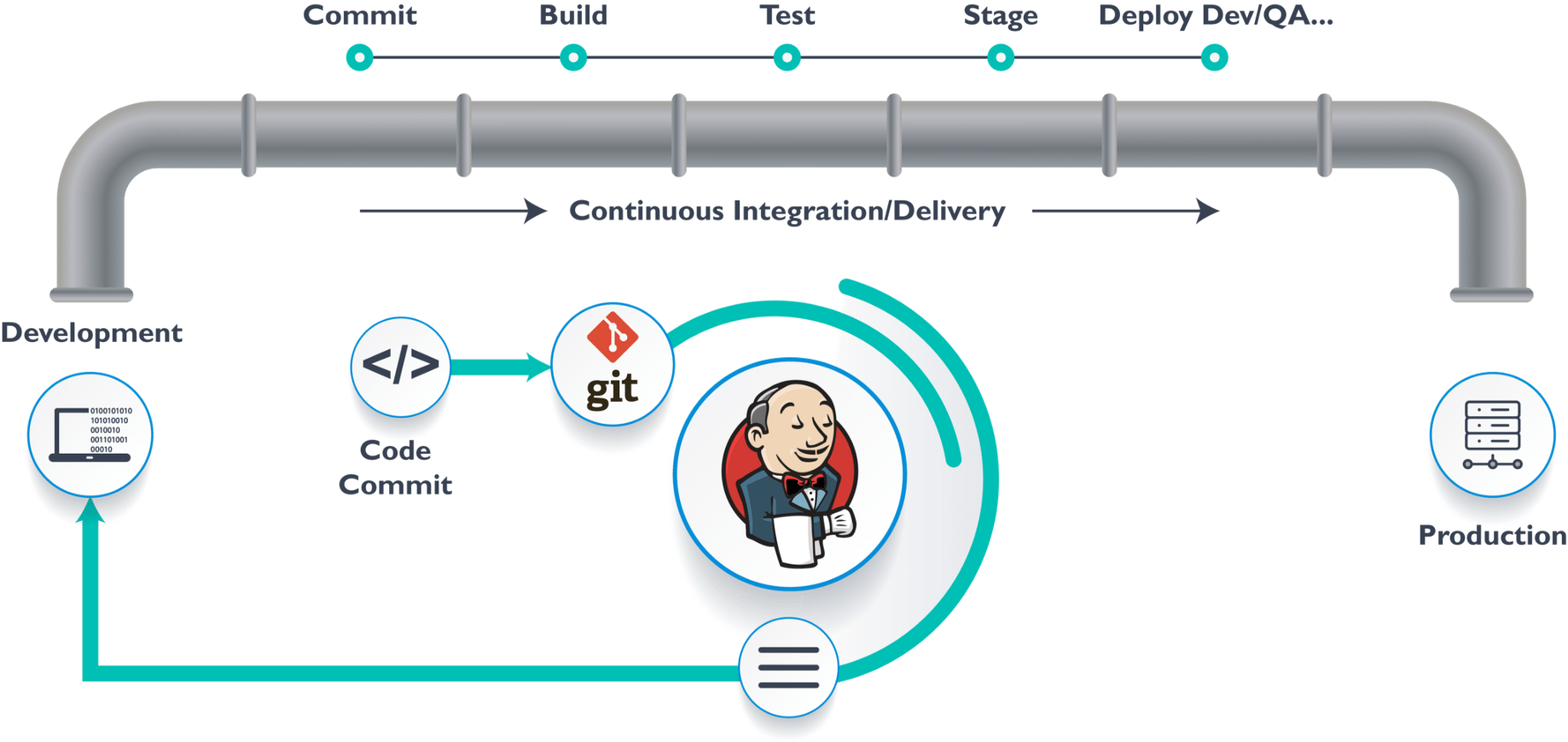
GitLab
GitLab is another powerful automation platform that covers the entire software development lifecycle. GitLab is an excellent option for your team if you want simplicity and everything in one place. Don’t want to manage a bunch of disconnected software tools? Then you can build, test, and deploy, all from GitLab. Check out GitLab’s exhaustive features list below or on GitLab’s website.

Harness
Harness markets itself as the most modern CI/CD platform available. Harness is used by many large brands including eBay, Ancestry, and BeachBody. The major draw to the Harness platform is AI and Machine Learning workflows, intended to offer smarter software delivery choices. Your team can deploy without the use of scripts, plugins, or all of the other painful pieces of deployment. Harness has a bare-bones free option, but small organizations can work with the Team Plan at only $100 a month.
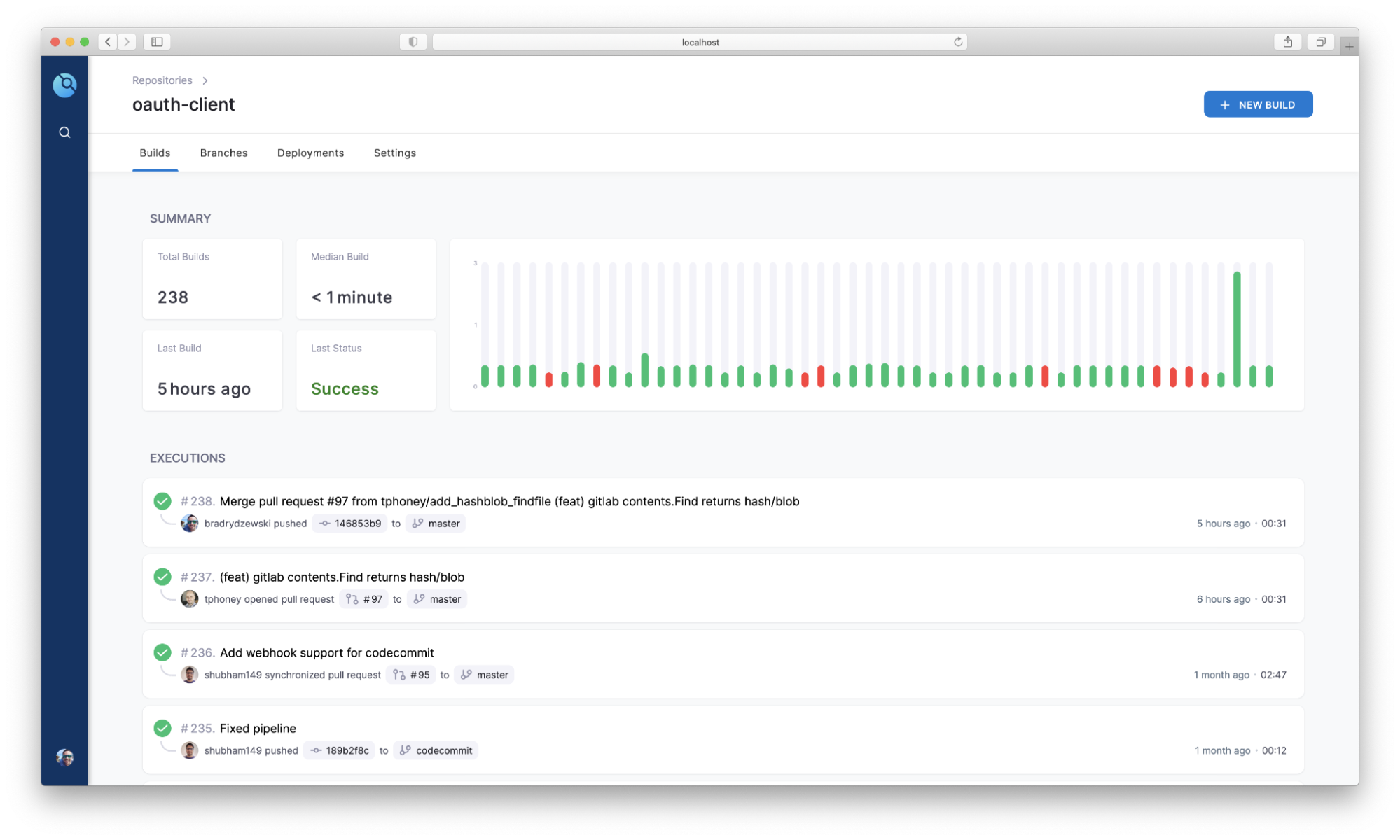
3. Testing
If you’re just getting started with DevOps automation, then testing should be near the top of your list. Stop wasting labor and resources with manual testing. With automated testing tools, you’ll find more bugs and your developers will be freed up to progress on more meaningful work.
Selenium
Selenium is a popular open-source automated testing tool, specifically for web applications. Check your application across different browsers and operating systems. The Selenium suite of tools includes Selenium IDE, Selenium RC (remote control), Selenium Web Driver, and Selenium Grid. Create complex tests and then use Selenium Grid to run multiple tests across multiple browsers to efficiently run your tests.
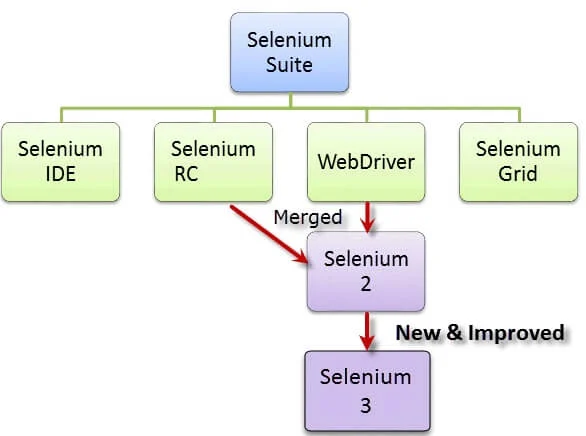
Katalon
With Katalon you aren’t limited to web applications. Katalon has the functionality for web testing, desktop testing, API testing, mobile testing, and integration testing, across all operating systems and browsers. Katalon offers codeless test creation for any junior developers new to testing, but customizable scripts and extensions for more advanced users. Katalon is easy to integrate with CI/CD platforms like Jenkins. Use Katalon’s free testing service, or upgrade to Studio Enterprise. Studio Enterprise isn’t cheap and will run your team $1,899 per year/ per license.

Appium
Appium is specifically designed to automate testing for mobile, native, and hybrid web-based applications for iOS and Android devices. This is another open-source option that is highly community-driven. You won’t need to compile any Appium frameworks to your application and can run tests within your own application. Appium makes use of Selenium’s Web Driver for API automation. Write tests in any language that is supported by Selenium, including PHP, JavaScript, Python, Java, and more.
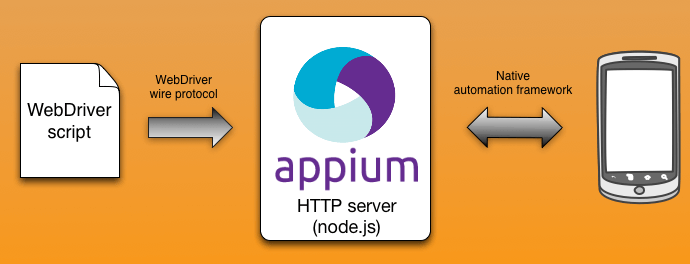
4. Infrastructure Provisioning
Now we’re finally talking about some IT concepts and how to automate infrastructure provisioning. Infrastructure provisioning covers the set of your hardware and IT architecture. When infrastructure provisioning is automated, this is referred to as infrastructure as code.
Pulumi
Pulumi is there to help you with your infrastructure provisioning in the cloud. You can select one of 60 cloud providers and use Kubernetes to containerize. Join your Dev and Ops teams on one platform to manage your cloud services.
Terraform
Terraform is an infrastructure provisioning tool, very similar to Pulumi, with a focus on cloud infrastructure. With Terraform you can integrate your current workflow, manage Kubernetes, and set up your databases, firewalls, and servers.
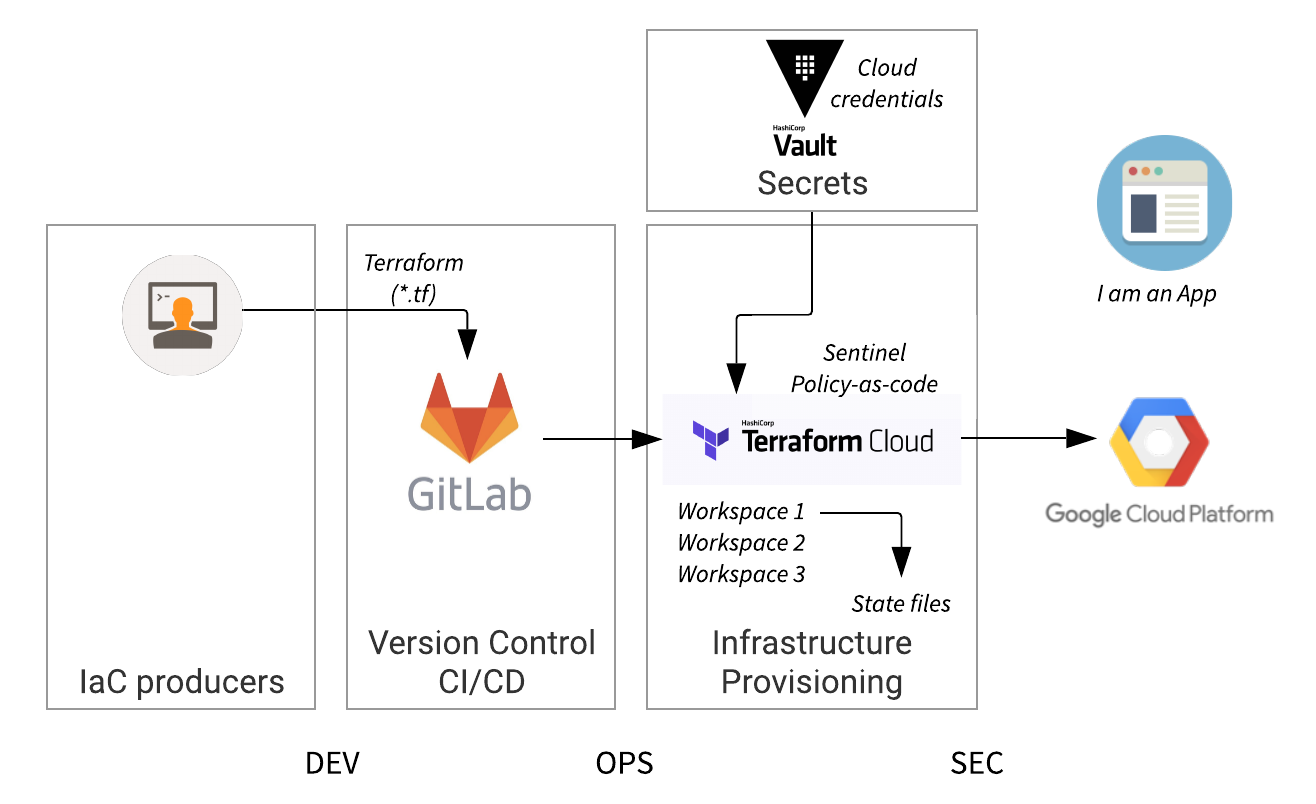
Ansible
Ansible stands out from the crowd because Red Hat has decades of experience in infrastructure and its platforms have been extensively tested. Ansible is an open-source project and is freely available for any organization to use. Ansible can help you automate building and provisioning your IT infrastructure. Automate your networks and containers, keeping it simple, but effective. Ansible uses Playbooks, which are automation task blueprints, that can be configured and edited to suit your needs. You won’t have to create IT automation programs and services manually. Ansible’s Playbooks act as templates to save your Ops and Dev teams tons of time.
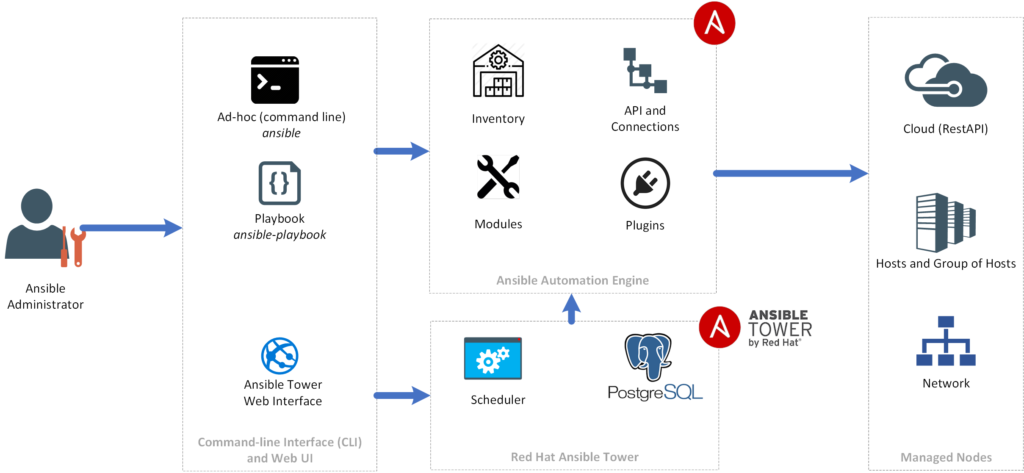
5. Log Management
Your log files are not to be ignored unless you want to end up with a major catastrophe later on. But how do you handle massive log files in an efficient manner? Log management tools will help you automate this entire process, so your developers spend less time managing and sorting through log files.
Site24x7
Let Site24x7 handle your log management around the clock. Site24x7 can monitor your entire application or just your log files. Site24x7 will automatically consolidate your log files based on the type and index them for easy reference later on. Use Site24x7’s web client to gain actionable insights on your log files, so you know what issues to resolve first. Site24x7 is not a free service but offers a lot of flexibility with pricing, so you aren’t paying for tools you aren’t using.
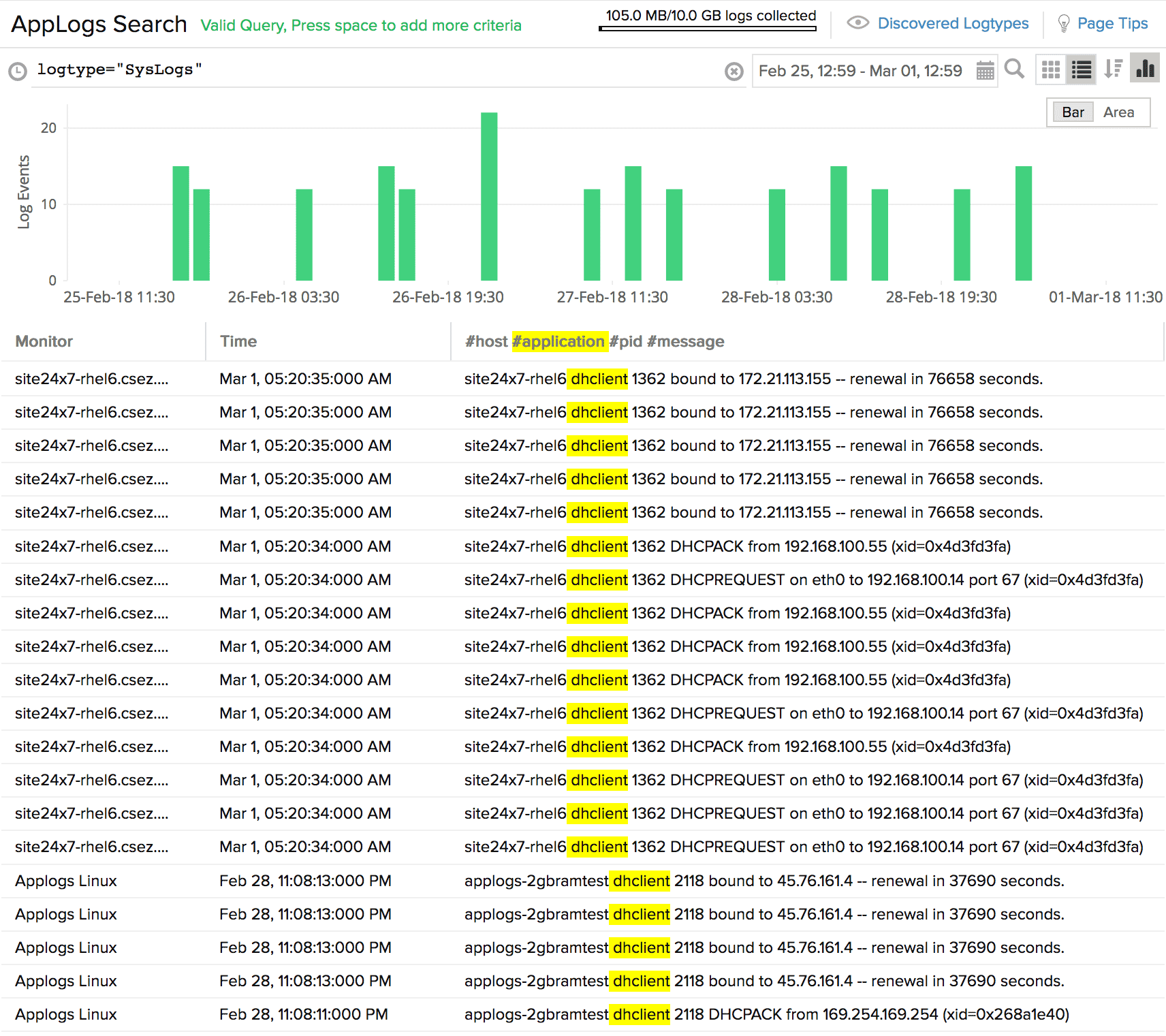
Datadog
Data Dog is a whole platform for application monitoring, but we want to highlight its use for log management. With Data Dog you can easily search through log files with no higher-level language needed. Automatically generate log metrics and your team gets to decide which logs are the best to focus on. Data Dog has a feature called Rehydrate, allowing you to pull and restore logs from your compressed archive if your team decides it needs them. As you scale your software product, Data Dog scales with you and is capable of handling petabytes of data each month. Data Dog charges $0.10 per GB to ‘ingest, process, live tail, and archive all logs’, but the Rehydrate feature will cost you more.
6. Security
With the risk of cyberattacks increasing exponentially, you need great security tools that can automate responses to incoming threats and alerts. Security providers today offer security orchestration, automation, and response services, also known as SOAR. Orchestration is responsible for connecting security tools, to help them share information and work together. Security automation focuses on automatically assessing incoming threats and alerting on-call Ops team members as needed.
Splunk
Splunk is a highly regarded security data platform with numerous automation options. With Splunk you can easily get started with utility playbooks to automate simple, but invaluable tasks. Outline the metrics you want to monitor and Splunk will handle that for you too. Automate workflows that are used time and time again, such as escalation actions and response to phishing. Splunk is not a free product and may be out of reach for smaller organizations.

Burp Suite
Burp Suite offers fully automated software application security software. With Burp Suite, find the vulnerabilities in your web applications, faster than ever. If you need enterprise-level coverage, try Burp Suite Enterprise Edition, chosen by major brands like Shopify. Improve security visibility with Burp Suite’s security dashboards and automated emailed scan reports.
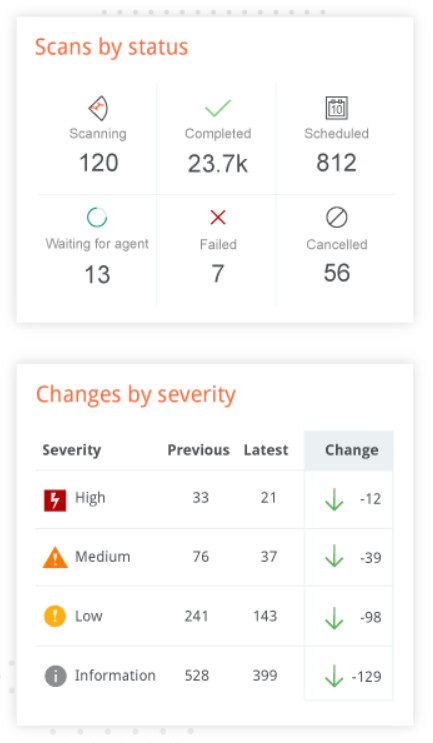
Wrapping up DevOps Automation
DevOps and automation are so closely intertwined that it’s hard to tell where one starts and the other ends. Teams that commit to the DevOps culture will eliminate the separation between Dev and Ops teams while automating every process they possibly can.
And they’ll be so much better for it. Automation helps standardize processes and workflows, improve delivery times, promote flexibility, and helps you scale your software to new heights. Let automation handle the heavy lifting by reducing manual processes and freeing your talented Dev and Ops team members up for the more important tasks.
Did you find any new automation tools that are worth exploring or implementing in your organization? Whether you need to automate CI/CD, testing, infrastructure provisioning, monitoring, log management, or security, there is a tool for every budget and team. Simplify the deployment process using a CI/CD platform like GitLab and your Dev team will be more productive than ever. Your Ops team will appreciate security management tools like Burp Suite, to simplify their processes and handle the massive volume of alerts. Your users will love having a singular page for checking the status of outages or service disruptions, with Instatus. With so many great options, which tool are you most excited to explore?
Get ready for downtime
Monitor your services
Fix incidents with your team
Share your status with customers

